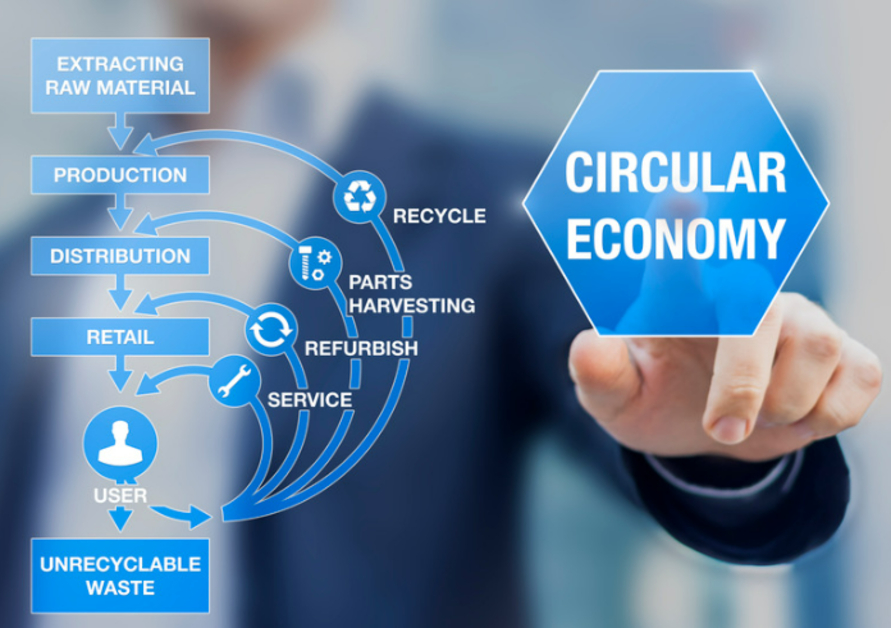Meeting the demand for minerals while embracing Sustainability
A smooth and fast transition to clean energy is critical for countries around the world to meet their emissions targets and mitigate the worst effects of climate change. This won’t be possible without a large expansion in mining, as renewable energy technologies depend on significantly higher quantities of minerals than fossil fuel based systems. Meanwhile, both population and economic growth will put natural resources under further stress.
Solar power plants, wind farms, and electric vehicles all require minerals including lithium, copper, cobalt, nickel and the rare earth elements – which will result in unprecedented levels of demand in the coming years, even tripling in large developing economies. According to the World Bank, we’ll need to mine over 3 billion tonnes of minerals and metals to build the clean energy infrastructure needed to meet the climate goals laid out in the Paris Agreement. The pressure on our planet is mounting fast.
Recycling is not enough
If we are to meet this skyrocketing demand for mining, it must be done sustainably, with a circular approach that decouples economic growth from resource extraction, cuts out waste, and extends the lifespan of materials for as long as possible. Recycling is projected to rise faster than mining activity, but even if 100% of materials are recycled, more will still need to be extracted to meet this need.
According to the Internaional Energy Agency, demand for lithium for electric vehicle batteries will grow by over 40 times by 2040. Material recovery is increasing, but it comes with its own complexities and challenges. Products need to be designed such that it enables a high and efficient rate of material recovery. The introduction of battery digital passports will help to facilitate an increase in material recovery and a shift towards a circularity.
Mining will therefore still be necessary if we are to successfully transition to clean energy. But mining’s environmental concerns, including its impact on clean water supply and biodiversity, have caused mining projects to fall under scrutiny and in some cases be cancelled altogether.
Making sure that mining is performed responsibly and sustainably will be pivotal to strengthening the supply of critical minerals, while ensuring the industry’s emissions rate doesn’t counteract the good that comes from switching to renewables.
The market demand for Sustainability
Amid rising awareness of the threat climate change poses, environmental, social, and governance (ESG) is of growing concern to investors, while consumer demand for responsibly sourced products and transparent supply chains is also on the increase.
This means that to secure new and growing forms of investment and attract customers, mining companies must commit to responsibly extracting materials and integrating circular solutions. While there are challenges to this, it also presents the opportunity to position mining as a world leading green industry.
As well as cutting emissions, responsible mining can help the mining industry pave a path toward the UN’s Sustainable Development Goals (SDGs), as mining operations are intrinsically linked with biodiversity, energy consumption, the availability of clean water, resilient jobs, and so on. Circular solution approaches are interlinked with the success of all of these goals.
Ultimately, mining must adapt to market pressure as well as environmental ones. This could even entail the costs for materials varying depending on how they were mined and the emissions that were released as a result of the mining process. Adopting the principles of the circular economy early will allow mining companies to benefit from preferential market access.
The need for standards to spur investment
As mining operators progress towards circularity, there must be standards and metrics around various elements of the circular economy. These can allow companies to demonstrate their commitment to closed-loop processes to various customers and investors and help businesses understand and address areas for improvement.
All stakeholders must clearly understand these standards to aid companies in accessing investment and market access. While a few frameworks are beginning to measure circularity, many for Sustainability overlaps, such as those that measure reductions in waste, pollution, and carbon emissions.
A new normal for mining operators?
The demand for sustainably sourced and produced products is rising, and companies will increasingly brand themselves as circular to capture this demand. But closed-loop business models aren’t just able to generate new value streams – they’ll prove critical for maintaining natural resources that are already under huge amounts of stress.
New business models will emerge from the realisation that business as usual simply won’t be a viable option in the years to come. Only those operators who fully immerse themselves in the circular economy will stay competitive and resilient.
While metal and material extraction will undoubtedly continue, mining companies should ask how they can begin to position themselves as ‘materials solutions companies’ – vertically integrating themselves into supply chains to source and recover metals away from extraction.
Mining operators should seize this opportunity to be at the forefront of these market changes and make transformational changes early, ensuring they don’t waste this unique moment for impactful, profitable innovation.
If you would like to know more
At Evolveable Consulting, we assist businesses in identifying circular solutions and strategies to reshape their business. You can learn more about our services or book a consultation directly with us.
